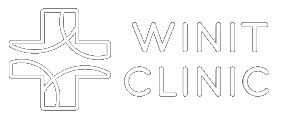Chilblains treatment
Prevent, alleviate, or heal disease—naturally.
Meet our practitioners who specialize in natural Chilblains treatment
How it works
Consult with our health coaches who will learn about your symptoms, habits, and goals.
Take personalized home health tests to discover potential root causes of any symptoms or conditions you may have.
Review your results in just days with our functional medicine doctors, nurses, and dietitians who will help you achieve optimal health.
Learn about Chilblains
Chilblains, also known as pernio, is a condition characterized by the painful inflammation of small blood vessels in your skin, typically occurring in response to repeated exposure to cold but not freezing air. While not life-threatening, chilblains can cause discomfort, redness, itching, and swelling, primarily affecting the toes, fingers, ears, and nose. Although less common in regions with mild climates, chilblains remain prevalent in areas with cold, damp conditions.
Causes
The exact causes of chilblains remain somewhat elusive, but they are primarily linked to the body's response to cold exposure. When the skin gets cold, blood vessels near its surface constrict. As the skin warms, these blood vessels expand more rapidly than normal, leading to leakage of blood into surrounding tissues, which causes inflammation and swelling. People with poor circulation, living in cold climates, or with a family history of chilblains are at higher risk. Other contributing factors may include tight or restrictive clothing, poor nutrition, and conditions that affect circulation like lupus.
Signs and symptoms
- Redness on affected areas - Itching and burning sensations - Swelling and inflammation - Painful blisters or skin ulcers in severe cases - Changes in skin color to a dark blue, accompanied by pain
Diagnosing Chilblains
Chilblains can usually be diagnosed based on a thorough clinical examination and a review of symptoms. Doctors evaluate the skin's appearance and consider factors like recent exposure to cold and medical history. There aren't specific tests for chilblains, but tests may be recommended to rule out other conditions, such as frostbite or Raynaud's phenomenon. In some cases, a biopsy of the affected area is performed to confirm the diagnosis.
Prevention and natural treatment
Preventing chilblains involves minimizing exposure to cold, dressing in layers of warm clothing, and keeping the living environment warm and humidified. For those who experience chilblains despite preventive measures, treatment aims to relieve symptoms. This includes: - Keeping the affected areas warm and dry - Applying topical corticosteroids to reduce itching and swelling - Avoiding scratching or applying direct heat - Use of gentle warming techniques and protective coverings - Improving circulation and overall health through regular exercise and a balanced diet - In severe cases, medications to improve blood flow may be prescribed Functional medicine emphasizes the importance of identifying and addressing the underlying causes of diseases. For chilblains, this approach could focus on improving circulation, nutritional support, and strategies to manage exposure to cold. Natural treatments might include supplementation with omega-3 fatty acids to support circulation, vitamin B complex for skin health, and using herbal remedies like Ginkgo biloba to enhance blood flow. Lifestyle changes, such as regular exercise and smoking cessation, can significantly improve symptoms and prevent future occurrences. Maintaining open communication with a healthcare provider familiar with functional and natural treatments is crucial for managing chilblains effectively and minimizing the risk of complications.
Browse popular locations
Atlanta, GA
Houston, TX
Chicago, IL
Los Angeles, CA
Miami, FL
Austin, TX
Dallas, TX
New York, NY
Seattle, WA
Charlotte, NC
Denver, CO
Maryland, NY
Connect with an expert for Chilblains


